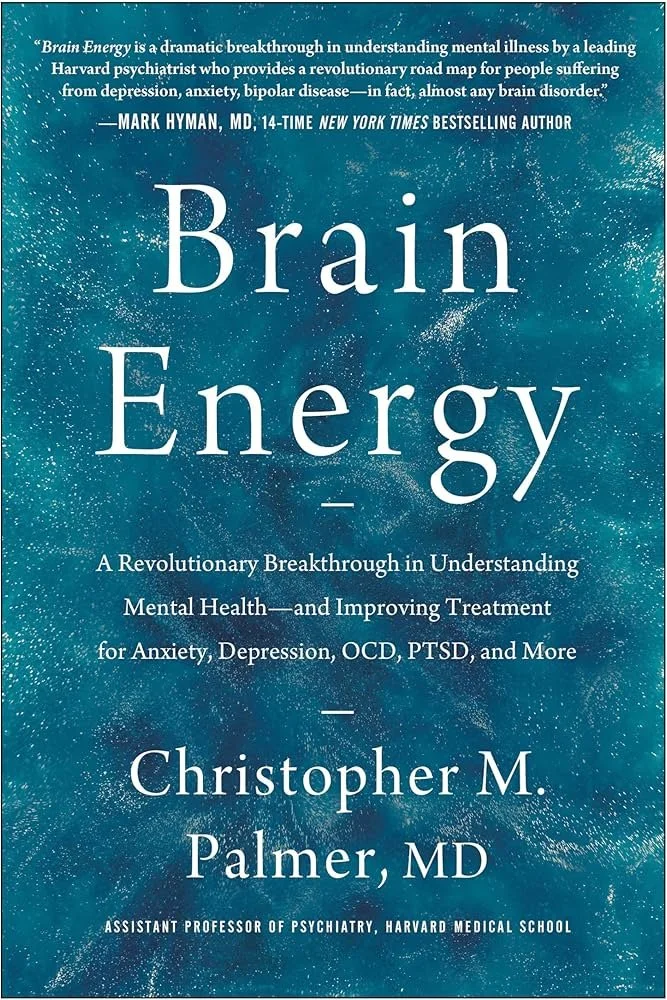Book Review: Brain Energy by Chrisopher M. Palmer, MD
Introduction
Chris Palmer did an amazing job writing this book. I strongly believe that all health is tied to mitochondrial health, and vice versa (mitochondrial dysfunction is the cause of all chronic disease). He was able to explain that all mental illness is mitochondrial dysfunction manifesting itself in different ways. Depending on someone's genetics, or epigenetics, how they show their signs and symptoms may be different, Alzheimer's, vs bipolar vs diabetes, however they all have the same root cause, mitochondrial dysfunction.
7 Major Takeaways:
Mental disorders are metabolic disorders of the brain
A bidirectional relationship is when you have one disorder, you are much more likely to develop a 2nd disorder. For example, if someone has a cold, having a runny nose and a sore throat are bidirectional. Some people may either have a runny nose or sore throat, but most people end up with both. But these are both just symptoms of the same thing (inflammation). Same thing with mental illness, it’s bidirectional meaning if someone is depressed for example, they are much more likely to get anxiety for example. Taking it one step further, if someone is depressed they are much more likely to be obese or have diabetes, or CVD or ect. The depression is not causing the CVD, and the CVD is not causing the depression- they are both caused by the same thing, mitochondrial dysfunction
He defined metabolism well, like we all hear the word, but it’s hard to define… “metabolism is the process of turning food into energy or building blocks for growing and maintaining cells as well as the appropriate and efficient management of waste products”. Problems with metabolism are generally energy imbalances. There are a myriad of things that affect metabolism such as light, sleep, food, exercise, alcohol, drugs, ect.
All disease is a byproduct of issues with energy production- aka mitochondrial dysfunction.
Mitochondria have a lot of functions other than energy production. They regulate calcium channels, regulate metabolism, produce/regulate neurotransmitters, produce/regulate hormones, regulate stress, create ROS, clean up ROS, change shape, move, regulate gene expression, they can multiply, they are involved in cell growth and differentiation, help existing cells maintain, eliminate old cells (Mitophogy), and ect.
There are no genes that significantly increase the risk of mental disorders. A much better explanation is epigenetics, which is the study of what causes genes to turn on and off; this is regulated by mitochondria. If mitochondria are dysfunctional, the wrong genes might be on when they should be off and vice versa. This can explain most mental illness as most of it is either overactive cells, under active cells, or absent cells.
Since I think light is the future of health, I think It’s always important to mention how important it is for mitochondrial health. Red light stimulates ATP production, however **blue light tends to inhibit ATP production, and increases ROS production.
Conclussion:
Dr. Palmer did an incredible job connecting mitochondrial function to mental illness, and inadvertently he also connected it to all other chronic diseases. He did a great job highlighting what causes mitochondrial dysfunction in the first place as well. I wish he did a better job explaining what to do and how to approach it. I think he could have given more actionable steps. However, if you know what’s broken, that’s the first step in knowing how to fix it. All in all this is a 9/10 and highly recommend anyone read it.
Amazon link Brain Energy by Chrisopher M. Palmer, MD

